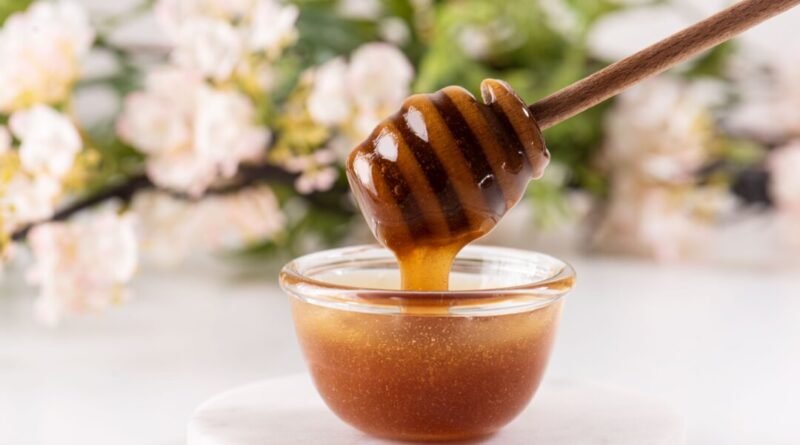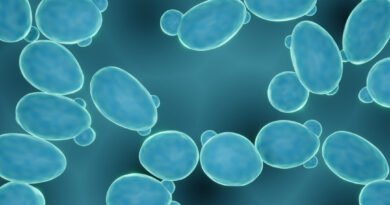Manuka Honey’s Association with Methylglyoxal and Cancer Sparks Inquiry
Renowned for its distinctive antibacterial properties, emerging evidence suggests that manuka honey may play a role in promoting tumors in cancer.
What Is Manuka Honey?
Bees produce manuka honey by pollinating the manuka bush, a flowering shrub that is native to New Zealand and southeastern Australia. This honey, derived from the nectar of the flowers, is highly valued for its unique antibacterial properties and potential health advantages. Manuka honey is commonly used in skincare products, wound dressings, and as a natural sweetener. It is also prized for its rich flavor and thick consistency.
What Is Methylglyoxal?
Our cells produce methylglyoxal as a byproduct of glycolysis, a process that occurs when our bodies break down glucose to produce energy. Methylglyoxal is also present in carbohydrate-rich foods and naturally occurs in various types of honey, particularly in manuka.
Current Research on Manuka Honey and Cancer
Many advocates uphold manuka honey for its purported anti-cancer properties, and existing evidence supports this connection. A review published in Evidence-Based Complementary and Alternative Medicine in 2013 highlighted several intrinsic properties of manuka honey, including its apoptotic, antiproliferative, and antitumor necrosis factor components.
Dr. Zev Schulhof, an oral and maxillofacial surgeon at Iconic Implants, explained to The Epoch Times in an email, “Some studies have shown that this type of honey can induce apoptosis in cancer cells, which causes them to die.” He continued, “It has also been found to cause DNA fragmentation in cancer cells.”
Some individuals turn to manuka honey as a holistic option for cancer care. Nevertheless, Dr. Schulhof cautioned, “It’s important to note that manuka honey isn’t a substitute for treatments such as chemotherapy.”
This suggests that while manuka honey may have positive effects on cancer, it could also potentially support the growth of existing tumors.
The authors ultimately attributed a dual role to methylglyoxal in cancer: “On one hand, MGO [methylglyoxal] inhibits tumor growth by inducing cytotoxicity and impairing the expression or activity of factors that are crucial for invasiveness. On the other hand, recent studies show that MGO can essentially support tumor growth by evading programmed cell death and increasing migration.”
Review of the Methylglyoxal and Cancer Study Findings
The study published in Cell earlier this year revealed that when methylglyoxal is released in the body during the breakdown of sugar, it can also suppress a specific gene expression that hinders tumor formation. In essence, elevated levels of methylglyoxal in the body may elevate the risk of developing cancer.
5 Proven Benefits of Manuka Honey
While many extol the alleged health benefits of manuka honey and use it regularly for this reason, much of the evidence is anecdotal. However, there are several established benefits:
1. Antibacterial and Antimicrobial Properties
One area where manuka stands out and has evidence to support it is in its antibacterial activity. A review published in 2018 in AIMS Microbiology credits its methylglyoxal content for this property. In 2017, a study published in the Saudi Journal of Biological Sciences found that manuka honey with higher levels of methylglyoxal is effective against drug-resistant bacteria.
2. Wound Healing and Skin Care
While further research is needed, some evidence suggests that manuka honey plays a role in tissue regeneration during wound healing. It is frequently applied topically to treat cuts and burns. One study, published in Turkish Neurosurgery, found that manuka honey may also reduce scar tissue formation.
3. Gut Health
Research supports manuka honey’s ability to combat H. pylori infections, a contributor to ulcers, as well as salmonella and E. coli, promoting the growth of beneficial gut bacteria.
4. Dental and Oral Health
Manuka honey’s antibacterial properties aid in fighting oral infections. A review published in 2020 demonstrated that manuka honey significantly combated harmful bacteria in the mouth. A clinical trial published in 2004 suggested that manuka honey could serve as a treatment for gingivitis and periodontal disease.
5. Cough and Sore Throat Relief
Research published in BMJ Evidence Based Medicine shows that manuka honey is effective in alleviating symptoms of upper respiratory infections, such as cough and sore throat, and may improve their severity and frequency.






